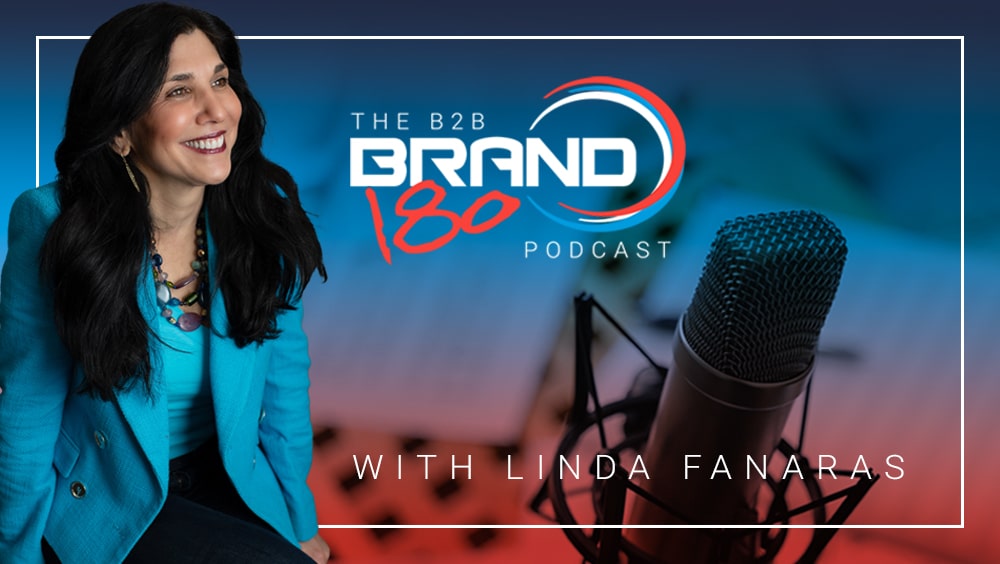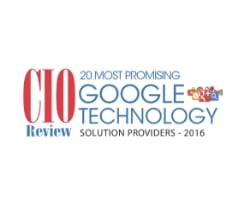In this episode of the B2B Brand180 podcast, Linda interviews Alessandro Bogliari, Co-Founder and CEO of The Influencer Marketing Factory. Alessandro discusses the value of influencer marketing. Alessandro also addresses common misconceptions of influencer marketing, the significance of a data-driven approach, and the benefits of long-term partnerships with influencers.
Tune in to discover how brands can effectively leverage influencer marketing to build trust and drive growth in today’s digital landscape.
02:59 Influencer Marketing Basics
05:51 B2B vs. B2C: Navigating Influencer Marketing
12:39 Success Stories and the Power of Authenticity
15:27 Building Strong Influencer-Brand Relationships
17:35 Global Growth Strategies for Influencer Marketing
20:00 Analyzing Success in Influencer Marketing Campaigns
21:43 Overcoming Challenges and Embracing Continuous Learning
23:35 Closing Remarks and Contact Information
More on Alessandro:
https://theinfluencermarketingfactory.com/
https://www.linkedin.com/in/alessandrobogliari
Linda’s LinkedIn: https://www.linkedin.com/in/lindafanaras/
Millennium Agency: Brand Strategy | Marketing | Web Design: https://mill.agency
YouTube Channel: https://www.youtube.com/@mill.agency/
Linda’s Books:
Claim Your White Space
https://www.amazon.com/CLAIM-YOUR-WHITE-SPACE-CRITICAL-ebook/dp/B0CLK8VLYV
Passion + Profits: Fueling Business And Brand Success
https://www.amazon.com/Passion-Profits-Fueling-Business-Success-ebook/dp/B0CLLDDSNX/
Linda Fanaras:
Hi, I’m Linda Fanaras, host of the B2B Brand180 podcast and CEO of Millennium Agency, where we talk about branding and growth strategies that are designed to help your business grow. But before I start, I just want to thank you for listening in today. And if you like what you heard, please hit like, share, or subscribe. I’m super excited to bring in Alessandro Bogliari and he is a digital entrepreneur and growth marketer. He’s serving as the co founder and CEO of The Influencer Marketing Factory. It’s a global agency and they specialize in influencer marketing. So we’ll be talking about that today. They work with many different brands and helping them launch campaigns, whether on TikTok or Instagram or YouTube, and he is recognized for his expertise being a member of the Forbes Agency Council and the Fast Company Executive Board. So thank you for joining me today. I would love for you to spend a couple minutes and tell us a little bit about yourself before we get started and start to talk about influencer marketing.
Alessandro Bogliari:
Yeah, thank you for having me. Absolutely. You know, I breathe influencer marketing, social media, everything that is related to these, you know, every single day I’ve been doing that for almost 10 years now. So I’ve seen influencer marketing, social media changing, I was there when Vine was discontinued, you know, I saw musical.ly becoming TikTok. I saw the first version of YouTube where you were able to upload videos and basically just watch the few videos that were online there, and so, you know, quite excited about it. Originally from Italy, as you can easily hear from my accent, I live in New York City. I was before in Miami, where our headquarter is still based, and so I’ve always been fascinated by social media. By commerce online, by, by influence, right? So as a term, it’s something that’s been around for ages. These days it’s just on social media, but it’s one of the oldest things, if you think about it. And so what happened is that around, eight, nine years ago, I got into influencer marketing because I was fascinated by this new thing. At the time it was still quite new. And I was working on the informational side of things. And then after a couple of years. I was like, I think that this might be a very interesting opportunity to open, you know, an agency that will focus on short form videos. That was the beginning. We’ve been one of the first to in TikTok. And so basically that after that, you know, we got amazing clients like Sony Music, Universal Music, Warner Music Group. They wanted to launch songs and new artists and TikTok was the perfect, you know, medium at the time. And then of course you will also open up to YouTube as well and everything. But basically the main idea behind the agency and my work was like, this is a serious business. It’s not just anymore, you know, kids in front of a screen, dancing and lip syncing. There is money involved. Therefore, brands will want to see ROI behind the campaigns. They want to see why they should put money. And so I wanted to say you have great content, you have influence, but you also have a data-driven approach. And so basically that’s why I co-founded The Influencer Marketing Factory.
Linda Fanaras:
It’s interesting just for our audience today, because our audience does, is comprised of a lot of B2B companies. So how would you explain in simple terms, what is influencer marketing for those who may not even know what it is, number one. And number two, why is it so important for brands today to embrace that?
Alessandro Bogliari:
Influencer marketing is, is more than just influence, you know, right? So basically when you imagine that what I say all the time is these one of the last time that you went to a restaurant or you watching a movie, most probably you, you got it for a friend from family, someone that you trust. And basically what is happening with influencer marketing, it is that instead of just listening to celebrities’ endorsement that were very, very strong in the ’90s and the 2000s, right? These days, a lot of new generations, but not only them, they believe more in someone that is relatable, right? So similar to a friend of yours that would tell you like, “Hey, what do you do? Like I bought this pair of shoes. Do you like them?” Like, “Oh, yeah, sure. Tell me more about them. Where did you buy them? Oh, at that store on that—” you know, whatever, whatever. And instead of having a friend that, you know, meet him in person, you have like these sorts of friends that you look, like, you know, after you look for that are influencers, content creators that have a certain, you know, opinion. Usually they have knowledge about something. And so basically, when you’re doing influencer marketing, you are getting the influence, right? Of these people. So these usually have like an organic reach to an audience that follow what they say and they buy things that they, you know, like a promoter, you get content. So very good content that is not made by, you know, necessarily polished, perfect type of content, but it’s maybe something a bit more raw sometimes. And these days that type of content works because it’s more relatable and more authentic. And then with that, we also get comments. And what I say it is that, you know, the comment section of an— I call it like a real time feedback focus group, basically. You can get every information about what people think about your product about your service. And that is like a very transparent type of conversation happening because they have nothing to lose in commenting positively or negatively. Right? So basically you have all these and then you also get the trust, right? The trust factor, because if no one knows about your company, but someone as a middle person, so the influencer is talking in a positive way about it, you’re using that trust as a bridge between you and the final customers. So again, once you get that, you get all everything included in the price of an influencer marketing campaign. And to answer your second question about why it’s crucial.
Linda Fanaras:
Right.
Alessandro Bogliari:
Everyone is on social media these days. A lot of influencers have a lot of like, you know, power when it comes to influence the others. And if you do not adapt to these days and you continually like being blind to what is progress and new things happening, the moment that you do not adapt right in marketing, you die in any way. So you have to understand that it’s not maybe for everyone necessarily, but I would all the time suggest go out there, experiment with things before saying it’s not my cup of tea, but if that is the case, these days, a lot of marketing budget is being shifted by from traditional media to influencer marketing.
Linda Fanaras:
Do you see many companies, business to business companies, using influencer marketing versus business to consumer type products?
Alessandro Bogliari:
Of course, it’s still a minority compared to B2C. You see, it’s way easier, you know, selling shoes, selling, you know, we have a lot of beauty products that is super simple, right, to manage. B2B we’ve done campaigns in the past. We still do, you know, I’m talking about, you know, pharmaceutical devices, SaaS softwares and so on. And, you know, it’s a bit more difficult because for instance LinkedIn, it’s amazing, but it’s still missing, you know, demographics data. It’s missing, you know, place where to find, you know, influencers, right. And, content creators there. So it’s still missing, I would say the tech component and the sort of like, you know, very good database about B2B brands. I mean, there are things out there, you know, but it’s not, of course, as important as B2C. But with that said finally, I would say there is a myth that B2B doesn’t work well with influencer marketing because actually, if you find someone that has a very strong community and usually in the B2B community, right, people that have an audience, it’s usually even a stronger community because if you’re into B2B and you have only, let’s say a hundred people following you, but those hundred people maybe are decision makers in, their company. And therefore one person in B2B might bring you the same revenues of a thousand people buying a $5 product, right? So different approach, but absolutely an increase in the past year of B2B businesses looking for influencer marketing.
Linda Fanaras:
And you see a lot of success with that.
Alessandro Bogliari:
Yeah, because you know, these days there are so many. Like, you know, there are still, you know, display ads, there are still a way to like, try to, acquire new customers. But again, these days, people don’t want to buy into companies. They want to buy more into people, other people in the, in the company values. So of course the pricing of something is important, but you also want the trust that you want to, there are so many software these days, right? Why should I go with that one? Yeah. Is it a present thing? But maybe not only. What if the influencer that is telling me this is telling me that this, you know, customer support of this business is fantastic. There is a big, like, you know, leverage for me to understanding, like, okay, should I go with that one because they have these amazing, you know, customer support that maybe I didn’t know display ads. But if someone in a YouTube video is telling me like, “Hey, by the way, I love this, you know, business because of that reason.” And if I trust you, right, as an influencer in that, I might be more inclined to go and check out the website from, or like, you know, even becoming a customer. That is the main difference is the trust.
Linda Fanaras:
What do you see as trends that are happening in the economy over the next few years and how relating around influencer marketing and how do you think businesses should capitalize on them? Because things are constantly changing. So, as you’re well aware, so, how can, how can businesses stay on top of that and maybe position and use influencer marketing to help their company grow?
Alessandro Bogliari:
Absolutely. So first, first of all, I know that it’s common sense, but I say all the time brands should stay on social media, like every, every day, just understand what is happening. You don’t have necessarily to jump on every new trend. You don’t want, that’s what I say all the time. Not because a trend is happening on TikTok, not because a video is going well on YouTube, you should necessarily replicate that, right? Like you, you should understand when to jump on something and when not, but no matter what, be on social media every day to understand what is happening, because the best way just to be there. Instead of having someone telling you what is happening because you have still that bridge and sometimes, lost in translation, yada, yada. So always better if you spend as a business time on it. And the second, I would say that we’re noticing more long-term partnerships happening, so in the years that we had a lot of, you know, one-off activations, right? With one influencer, another influencer here, another influencer there. But I would say then these days, we’re getting back to, for some brands, to a sort of idea of like, you know, ambassadors, right? Someone that can be with you for one year. They might, you might pay them a bit more for exclusivity. You might pay them for media rights, but they’re going to be more involved throughout the year or years with your product instead of just spending one time, one activation. Because again, there are so many influencers out there and sometimes one, only one message is not enough. The person that you are hiring should maybe repeat the same messaging two, three times a month for one year. And believe me, that is going to stick more, right? Compared to only one activation. So that I think that is up like long term partnerships with influencers you know, compared to the one-off type of activation.
Linda Fanaras:
That makes total sense. I do have a question about misconceptions around influencer marketing, because I think that a lot of clients have a lot of misconceptions. They don’t really understand what it is or never mind how it works. So what are some of the things that you run into from your clients relating to influencer marketing? Like what are the things that you have to address?
Alessandro Bogliari:
I would say the idea of the direct and immediate ROI. That is a bit of a myth because even if you can track, you have to think about the user behavior when it comes to social media. You cannot treat social media and influencer marketing as you would do for, let’s say, programmatic, right? You go, Google Ads, you put $1, you have your ROAS, right? More or less based on historical data. There is a sort of like, you know, math and science behind it. You can somehow, I buy something, it’s there in the cart. When I, when I purchase the event, fire it back. And now I know that someone purchase something thanks to that specific ad. When it comes to influencer marketing, even though you can track everything, because if you put like, you know, tracking pixels on the thank you page you know, there are so many new integrations also with e-commerces you know, and so on. Still, the behavior is a bit different. Once you are on social media, you’re not necessarily ready to buy because you’re not looking for that specific product. You might, you know, get something that is like pushed in front of your eyes. And so sometimes it works. Sometimes you might save it in your cart, right? And then maybe you buy it after a month. So you still are able to track that depending on the attribution model that you’re using. But long story short, many people think that, “Oh, I’m going to, you know, I’m going to see results the same day. I’m going to see results the day after, the same week.” Sometimes it just takes a bit longer because again, the user experience and the journey of the sales cycle there and the, the purchase cycle might be a bit longer because I might just, close Instagram or TikTok, and then maybe I’ll come back later, and then I remember about the product. So just a bit less immediate and that’s the only thing, like, do not expect necessarily sales the same day. It could also happen, you know, but what I mean is that in France and America, as I mentioned at the beginning of the episode, like, it has so much more. It has the content, the trust, the influence, the reach, and it’s not necessarily all the sales as you would expect, again, from, you know, a banner that you create and you purchase.
Linda Fanaras:
That’s great. Do you have a quick success story you can share relating to one of your campaigns and why it was so successful?
Alessandro Bogliari:
Yeah, absolutely. One that I selected is like, it’s, it’s O-Cedar. You know, it’s the big brand that’s primarily known for, for like, you know, mops and cleaning app, right? That one is an interesting one because you know, it’s to show you how social media these on social media these days and thanks to influencers, you can basically promote different types of industries that are not necessarily again, you know, just the beauty and fashion. So in this case, we’re talking about one of the, I think, biggest moments in hashtags on TikTok that is called #cleantok dedicated to people that love cleaning. They give you cleaning hacks and basically we were, here’s where we said, why don’t we do, why don’t we take things that are like, you know, very mundane, like, you know, just like cleaning your apartment, make it a bit more fun, right? Why don’t we do something like there is something called like Sunday resets. Where basically people film themselves and they just clean everything in their apartment. And they’re happy doing that, but, and this is the interesting thing and fascinating for me about social media. You have audiences that get relaxed watching that type of content. So basically what is that you’re watching? You know, similar to those that you know, satisfaction videos, right? Like that you have usually, you know, for many people that cannot maybe, you know, sleep and people at 2 in the morning on YouTube are watching this, you know, like, you know, type of videos. It’s the same concept for #cleantok. It was like, let’s do something that can make you like, you know, be more relaxed. Let’s take something that’s not exciting because it’s cleaning your apartment. Let’s make it a little bit more exciting, right? Less boring as a task and let’s show like how you can integrate you know a cleaning tool and something that is not the typical advertisement about like, “Hey, look how, you know, clean it is now.” It’s more about let’s have fun with it. Let’s, let’s do a challenge behind that, you know? And so, yeah, I want to just to show that again, something like cleaning and #cleantok, it’s a good moment. And if you, if you do it well, you can have not only views, you can actually have purchase going back to what we were saying before. You have something that people want to see, because after they do see that. And it’s not on TV with super polished, perfect content that you might be like, yeah, of course it is a studio behind that. I don’t believe that. But if I see someone my age or someone with a family, with kids, it’s relatable. Like, Oh, wow. Also last week, my kid, whatever, threw something and spilled something on that type of carpet. And they are doing basically the same. It’s so relatable because it’s so simple, authentic. They’re not only going to watch it. I’m going to, I’m going to most probably buy, right? That’s why it works.
Linda Fanaras:
Right. Yeah. No, that’s great. So I just want to take a moment here and thank our audience for listening in. And if you are liking what you hear today, please hit like, share, or subscribe, or feel free to provide a review to the B2B Brand180 podcast. I would like to know what you think are some key factors that contribute to building a strong and lasting relationship between the actual influencers and the brands, that real connection. How does, how do you get that to really work?
Alessandro Bogliari:
So first of all, selecting the right influencers is crucial. What I say all the time, is that better to spend a bit more time in finding the right ones instead of rushing it. Because if you don’t do that part well, then it’s going to be a domino effect of problems. So first of all, find them well based not only on demographics, but also based on their professionalism, right? You want someone that is getting back to you, someone that has a good communication, someone that is taking that seriously, right? You’re, you’re giving this person money and they also want to work for you and with you, therefore you want to find someone that is going to be a good partner. So first of all, that is one. A very clear, I would say as a, like a scope of work, right? Something that is going to be very clear, what to expect in terms of like deliverables, right? So basically deliverables means how many Instagram stories, how many, will you add a link in your bio? If so, for how many hours or days, you know? So ensure you’re on the same page about what to expect in exchange for a monetary compensation. And then I would say also, you know, alignment on values you want to work with like the influencers want to work with a brand that they care and they trust, the same should be also on that. And the last one, I would say also, creative freedom. That is very important. You don’t want to go to an influencer or to a content creator and tell them like, “Hey, this is the script just to repeat it word by word.” That is not going to fly because, you know, if you’re, if you’re buying into the audience of an influencer, they are there for their tone of voice. They’re there for their style, right? Their personality. If you try to silence that, and you try to make that person just basically a person repeating as a part of what you want, it’s not going to work. People are going to notice that, and that post is going to flop. So I think a good communication between their style, your guidelines, to try to find a middle ground, but primarily would say trust the influencer because they are one, they know their audience, they know. What works and what doesn’t on social media.
Linda Fanaras:
Okay. No, that’s, that’s fantastic. You’ve scaled your agency and I’m wondering what kind of strategies have you implemented to help grow The Influencer Marketing Factory globally?
Alessandro Bogliari:
We’ve been remote since day one we, we started the company at the end of 2018. Totally bootstrapped company, and basically at the time we were like, how can we start global from day one with a mindset and approach to the world of influencer marketing? Not only being in the US for multiple reasons. One, because of not just for the business opportunities, but to be honest, also to understand what is outside the US. Learn from other cultures, make an example, like the thing that I’ve been looking what is happening in China, Indonesia and other countries for years now. And they’re so like, you know, they are so advanced in many technologies and how people use social media, thinking about social commerce in China that you have to learn that. So from the one remote from number from day one. Being remote also helps you to find the right talent where they are. It helps for barrier language because not every, in every place you speak English, you need a person with the same language, the same understanding of same culture. So that was like very important for us, I would say. And, and you know, so understanding each again, each culture, each, each location, trusting, like, you know, trusting and caring about people, you know, that is when, when I co-founded the company was because I was coming from a very toxic experience, unfortunately in the past. And I was like, let me show you that we can do a marketing agency where you do love working where of course it is work to do, but you don’t go in and be like, I hate my life. I hate my job. I hate this. And so I think that like, you know, caring about the people that also goes behind just asking about work, but also really building a relationship. We have a tenure of our people that some of them, they are still with us after, like, you know, since the beginning. And they, you know, like we have a proudly, we have like a Glassdoor page with five stars, you know, basically. So all these, it helps a lot, I would say. And when you start caring, when you start building a relationship, when you are, what’s coming and opening to feedback and so on, even if it is not easy sometimes, I think that was making a huge difference between an agency with a good tenure of people and what we call them revolving doors agencies, right? Basically every single month. People in, people out, that it doesn’t have for the culture. So for us, culture was, was very important from day one.
Linda Fanaras:
How about the analytics when it comes to influencer marketing? How do you, you know, what type of analytics do you use? How do you decide whether that’s a successful campaign, not a successful campaign?
Alessandro Bogliari:
Yeah, it totally depends by the final goal of the campaign. Is it brand awareness? It is conversions? It is sales and purchase? It is a combination of the both? So first of all, you have to understand which are the final goals. What are the KPIs from the client? And once you have that, it depends also not, not just by the agency, but also is the client tech savvy enough to track things and help us when needed? Let’s say that they have an app, we can help with the setup and understanding like how many signups and downloads they got. If this is an e-commerce and they are able to put certain tracking pixels or whatever the user, we are able also to see not only how many sales they, the influencer campaign, like, you know, produce, but also who exactly brought that in? You know, every influencer will have a dedicated link with UTM parameters, and we’re going to be able, you know, with analytics and other tracking tools to see these three specific people brought in a decent amount of visitors that became this amount of sales. We can help up until a certain point. Then of course the company on the other side has to set up certain things in order for us to help us out. But, for some companies it’s brand awareness. So metrics such as, you know, views of the campaign, likes, shares, saves, and so on. Others instead for them, a good successful campaign, it is, what is the revenue behind that? What is the average ticket, you know, both thanks to the campaigns and so on and for other it is, you know, for apps, of course, it’s going to be downloads of the app and sign up and so on. the moment you can track, you should track.
Linda Fanaras:
Would you share, can you share some of your, I guess, your biggest maybe obstacle or failure that you’ve encountered on your entrepreneurial journey and just how you overcame it?
Alessandro Bogliari:
Yeah. So I don’t know if I overcame it yet because it’s you know, like when you own a business, right, you also see also so when, when you own something, it’s always a lot of ups and downs. So I think that every time that you think, oh, I got it. Then after a few days, I was actually like, maybe I didn’t get it, right? You think that you understood a hundred percent and then every day you’re learning something new. I would say that in my case, a couple of things that one coming from Europe at the beginning, when you build a company LLC, everything is new. You’re learning about not only the law, not only the economics, but also the culture, right? Coming from Europe where many things are different when it comes to business and then you get it to the US. Very competitive market. You have to learn how to basically how to, how to swim, like from one… to the other you know, and so that was like quite a, quite a challenge, I would say. But we, I always love doing out of the box ideas. So even without the budget at the beginning, we were able to get a very good market share. But the other things that I think, you know, you struggle with it is that, you’re scaling, like all the time and every time you learn something at the beginning, when you start, you think that, yeah, of course, I’m just going to add a few more people, right? Then you scale, but with an agency, you have to every X amount of you know, steps that you have to completely change the infrastructure. And sometimes it might be just a bit difficult because it’s time consuming, you know, they have to do it, but at the same time. You have the priority that is your client work, right? Try to navigate that. I think it’s a bit of a challenge and I am personally still learning a lot. So I would say that that is like the main one. And, but that’s also what I, what I like of being an entrepreneur. You never stop learning. So it’s never, it’s never boring for sure.
Linda Fanaras:
That’s a fact. Awesome. So I just want to take a moment and thank our audience for tuning into the B2B Brand180 podcast. We hope that you found the insights and strategies shared today to be valuable. And thank you so much. It’s, this was great. It was great to hear about the influencer marketing strategies that you have found that have worked. I would love for you to share how the audience can get in touch with you and where they should connect with you. And I’ll let you take it from here.
Alessandro Bogliari:
Yeah, absolutely. They can connect with me on LinkedIn, just my name. You can find me there. On our website, theinfluencermarketingfactory.com. You can find case studies and a lot of resources, reports, infographics about social commerce, the creative economy, influencer marketing. We just went out with a new virtual influencers report. So very interesting to see also virtual and digital influencers. What is the future of that? And so, you know, you can connect there. And I also host a podcast called The Influence Factor where we, you know, I interview creators, brand marketers, and other people in the industry to understand what is the, what was the past, what is the future, what is the future now, you know, present and future of influencer marketing.
Linda Fanaras:
Awesome. You shared a lot of great insights. So thank you so much. So again, I’m Linda Fanaras, host of the B2B Brand180 podcast and CEO of Millennium Agency, and you can visit us at mill.agency, or you can go to lindafanaras.com or just simply connect with me on LinkedIn. And thanks again for listening to the B2B Brand180 podcast.





























